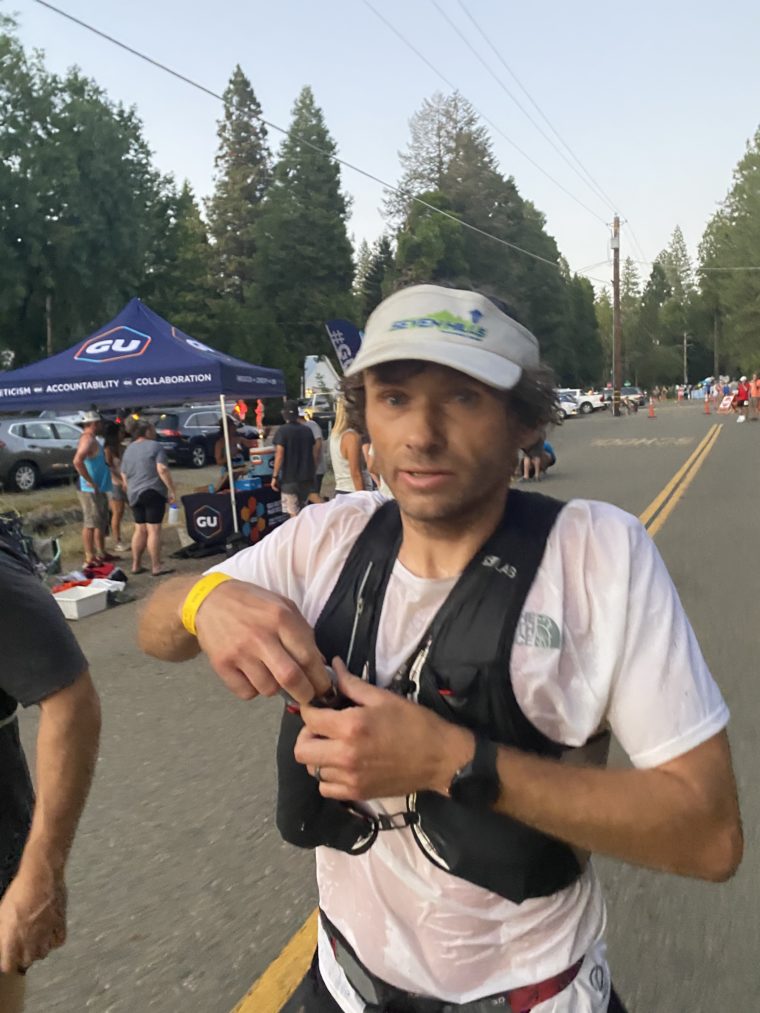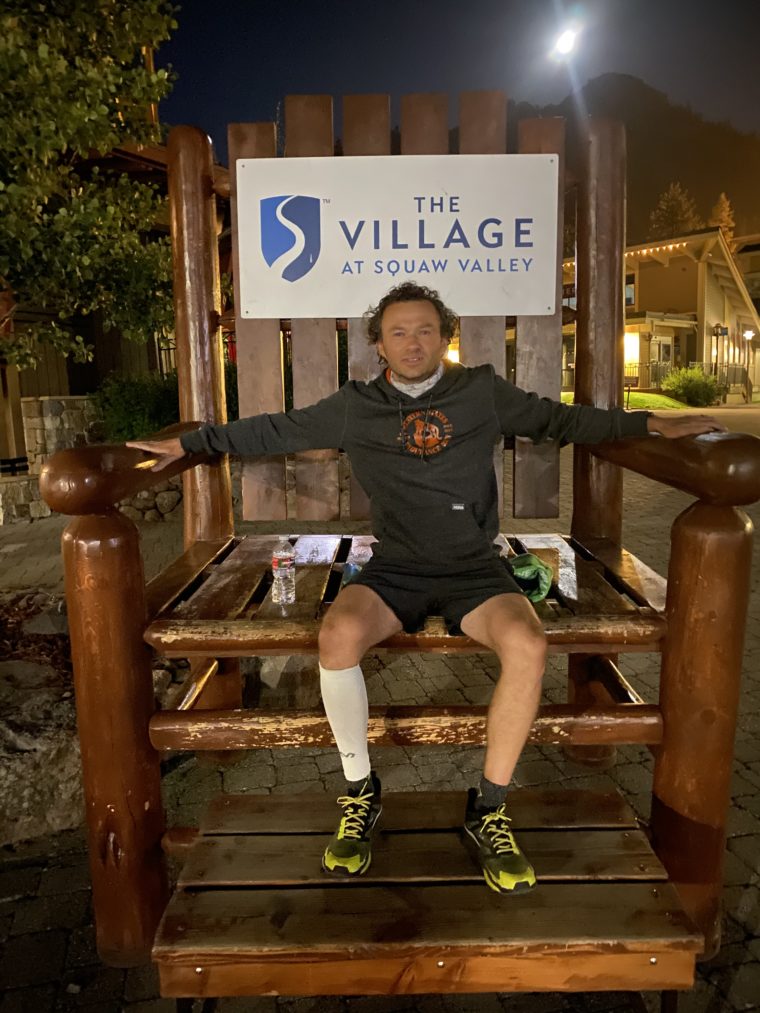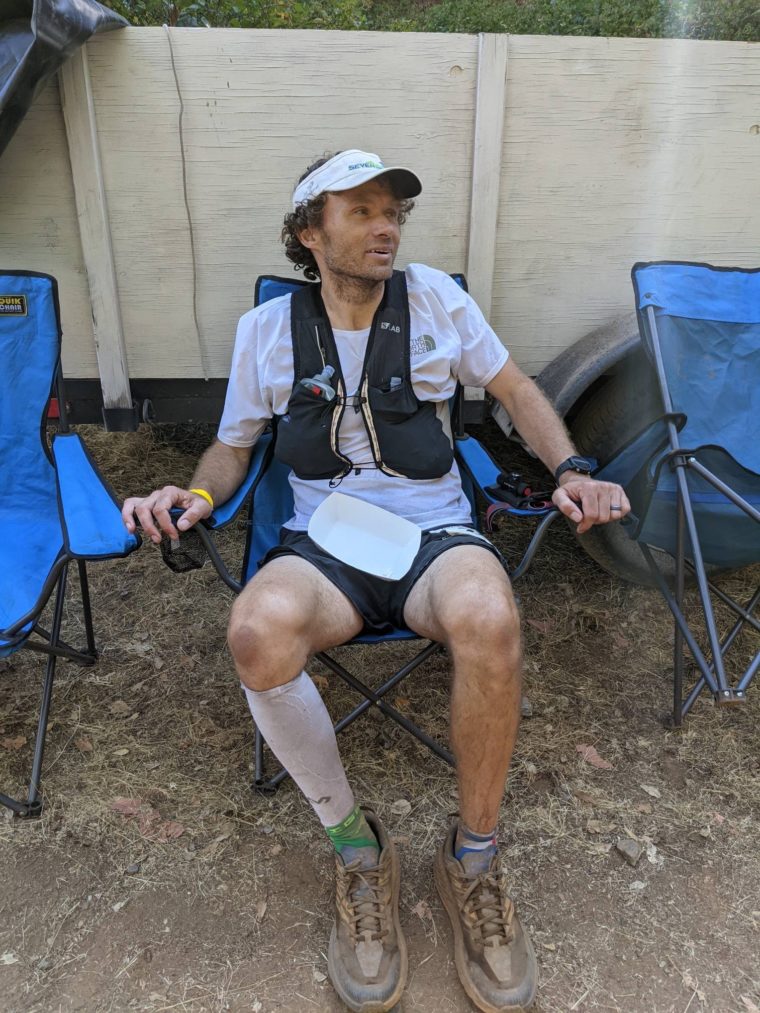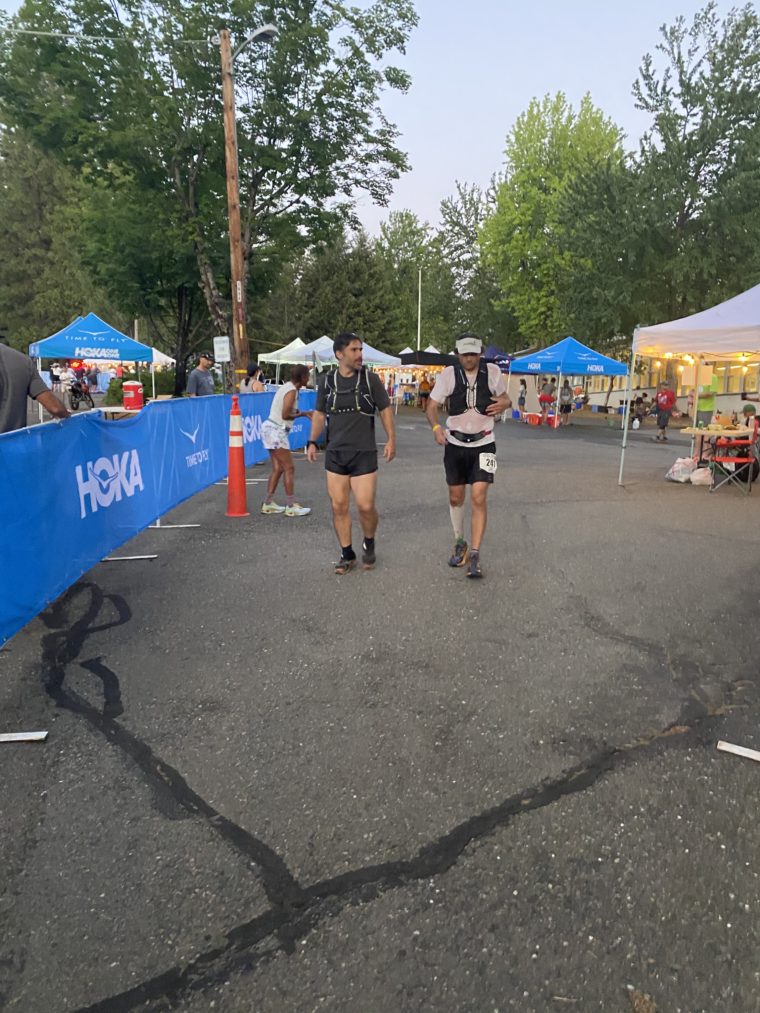It’s basically been a year since my running hit the reset button. That’s the optimistic way to view having kidney failure, aka renal failure or AKI.
A fresh start; a new beginning where running a mile felt like a challenge. But actually I can’t even remember a time previously when running a mile was a challenge.
Western States 100 in June of 2021 did not go as planned; I dropped out at mile 90 and got a lift to highway 49 in Hal Koerner’s Audi with my DNF stench invading his luxury and generosity.

Two days from the ceremony that could have awarded me a finisher’s buckle, I was in the ER with WSER race doctor Andy P. on the phone listening to the nurse read off my bloodwork numbers. The numbers meant nothing to me; and I was sure Andy would hear them and quiet the concern of the ER staff.
I was at Seattle Running Company to hear the stories from Brian Morrison, post Western States 2006. My recollection was that “normal” medical personnel wouldn’t be able to interpret the elevated levels of muscle breakdown in the blood post ultras. They had been concerned at the time for Brian in Auburn and the Western States doc at the time bailed him out with a different view of his bloodwork. I was positive Andy would do the same for me.
“Phil, those numbers are bad. You need to listen to everything they say. You’re probably going to need dialysis.”
Andy’s voice through my cell phone awakened me to my new reality. On the way to the ER I was thinking I would get an IV and go home. A week later I left the hospital.
It all started wrong: Covid cancelled the 2020 race. That summer I finished the Wonderland trail instead, 93 miles mostly solo in 27hours with no issues. But by November of 2020 when everyone should have been registering for the 2021 lottery and waiting for the early December reveal, I was plagued with injuries. First knee then later calf. January through June my training was pretty minuscule by most ultra standards—even by most marathon standards.
I recall Walmsley going Strava dark before the race and then a big reveal of a massive block of training. There would be no data dumps for me; there just wasn’t any data.
But it was Western States! I didn’t even consider not going; I admitted that I might not finish, but I wasn’t going to pass on my once in a decade chance to get my 4th WS buckle.
Only now when writing this did I happen to look at the Western States medical info: Number one is Renal failure! I also had two of The Terrible Three listed there: injuries and poor training. Luckily I did not use NSAIDS. I have Glenn Tachiyama to thank for that; his issue the year prior scared me off of ibuprofen forever!

Race day started with a strange quad cramp—at mile 5! It was the most painful cramp in a leg muscle I’ve ever experienced while running and was pretty startling being so early in the day. After several miles the cramp dulled and I traversed to the bottom of the Devils Thumb climb without much worry.
I was a walking zombie up that climb barely capable of putting one foot in front of another and sitting down several times on cozy looking rocks. I have actually gotten pretty good at spotting cozy rocks over the last few years, so this was nothing new. But then I inexplicably threw up in the middle of the trail. No nausea; no stomach trouble at all; no indication I was about to hurl.
That was the second odd physical issue of the day, but after regrouping and making it to Green Gate at mile 79, that was long in the rear view like the early morning cramp.
All was well; I had crossed the river! I was headed to the “easy” section of the trail. There was no doubt in my mind that I was going to finish.
Unfortunately as I was leaving Green Gate, everything changed when I inexplicably threw up again! Same experience as before. Unexpected; no nausea. Mid way to Auburn Lakes I got an S-cap stuck in the back of my throat, gagged and threw up again. I was pretty low on calories at this point and had no idea what could still be coming out of me.
Again, I righted the ship; the finish was getting so close. I tried to hurry out of ALT mile 85; nothing looked good to eat. I can’t recall if I tried any bites of anything. Aid station medical personnel were looking at me suspiciously. I assured them I was fine. Nothing to see here and as I was about to check out of the AS I hurled uncontrollably.
That effectively ended my race. I laid on a cot for a couple hours. I was 95th entering the aid station and if I am reading the split results correctly, 216th when I left.
I was fine until about mile 86. Then I was swerving on the trail. I wanted to sit on every cozy rock because my heart rate was racing. But sitting down didn’t slow my heart rate. So I decided to just walk and drop out when I got to the party that in my mind was Brown Bars of old, but ended up being a Quarry Road aid station that was busy packing up. No more music; no need for fun colorful lights anymore as it was fully the light of day. I remember Hal’s stark white TNF Flight Vectiv shoes and thinking: how did Hal keep those shoes so white all night on the dusty Quarry Road.
Thankfully they had a chair set up still that I didn’t get out of until Hal drove me away.

After leaving the hospital, I was swollen from liters and liters of IV fluid that just wouldn’t leave the body the normal way: urine. I had to capture my urine in a container to measure. I had already undergone 3 dialysis treatments.
There was no may to know when my kidneys would turn back “on,” but there was just no denying that they had totally shut off.
Luckily I only had 5 additional dialysis treatments outside the hospital: 4 hours of sitting in a chair watching Wimbledon and Sportscenter while my blood cycled in and out of my body, passing through filters. I tried not to look at the tubing and white filters turning red. Thankfully they can remove fluid during the process too.
I topped out at almost 180 pounds and was back to a bit over 140 when it was all said done: 4 weeks.
Why did they flood me with so much fluid if they knew my kidneys weren’t functioning? Well I guess they were hoping they would just start working again. I was 44, in good shape; not the average kidney patient my medical team was used to seeing. I was actually lucky in one regard: another Western States runner was in the same predicament as me following his 2021 race—a FINISH! When I messaged him he revealed that some of the extra fluid they flooded him with actually got into his lungs which caused another crisis.
Andy asked to see my records to help the WS medical team—and eventually other nephrologists—understand why this kidney failure happens to ultra runners, how to avoid it, and hopefully how to treat it better.

One really humorous memory to finish this off:
I picked up my pacer Walt at Forest Hill; first time meeting him. I was toast; I was so happy to have a pacer. Before we got off the pavement back onto the trail, he says to me—maybe to lighten the mood— funny story: the last guy I paced (in 2019) got Rhabdo and ended up in the hospital after the race.”
I definitely remember saying something like, well that’s a bummer, but I was thinking, “what’s rhabdo?”
Well I picked a hell of a way to learn about it!
Best of luck to all the runners this weekend and in years to come. Western States is a great race and I wish everyone can experience a finish in their lifetime!

Comments are closed.